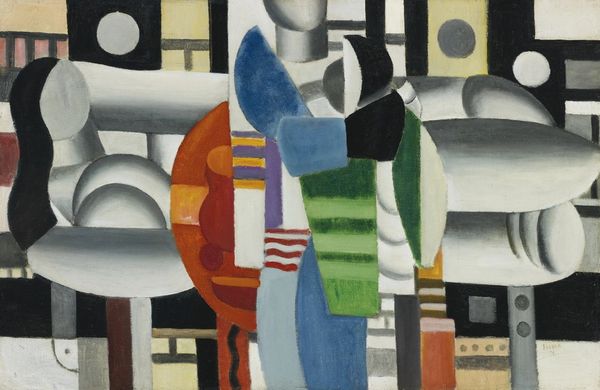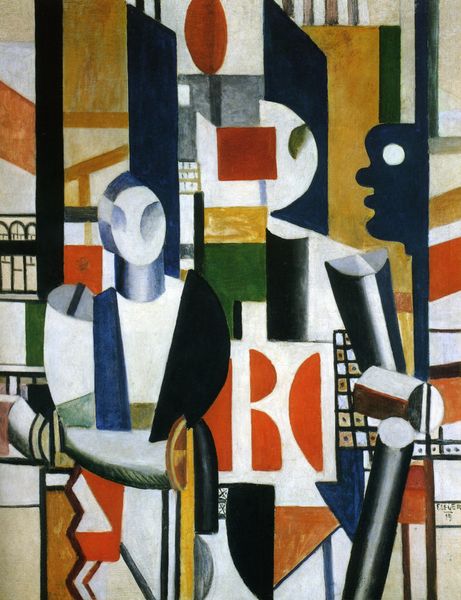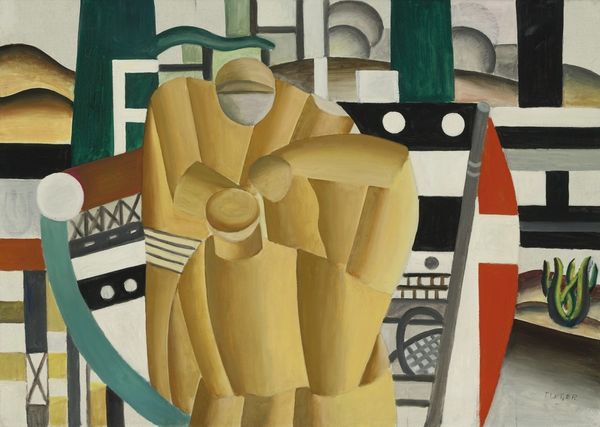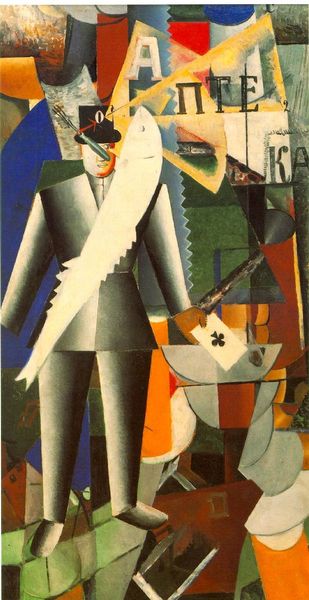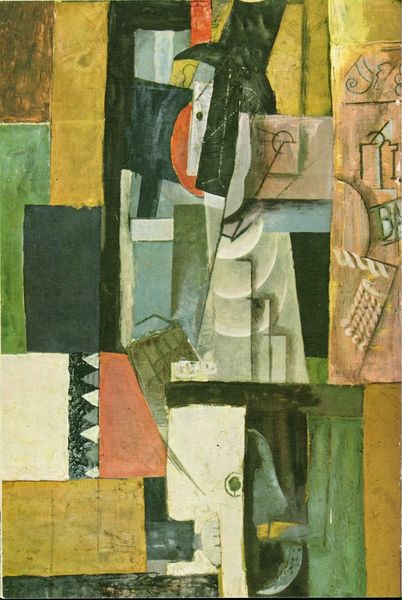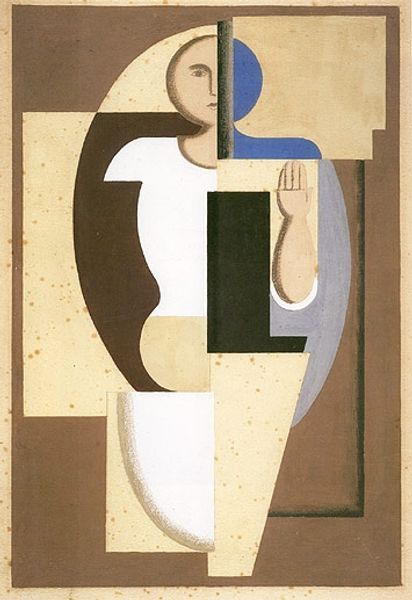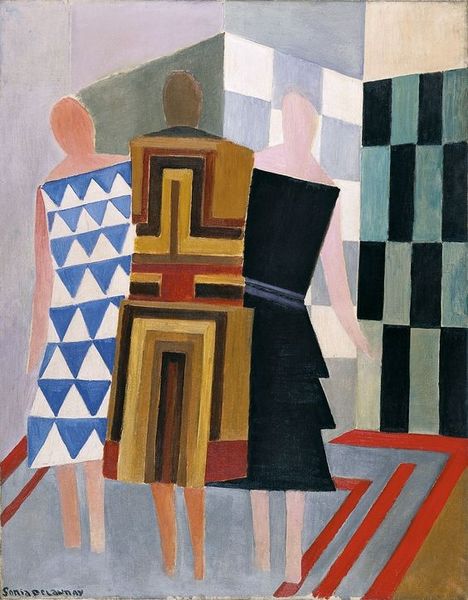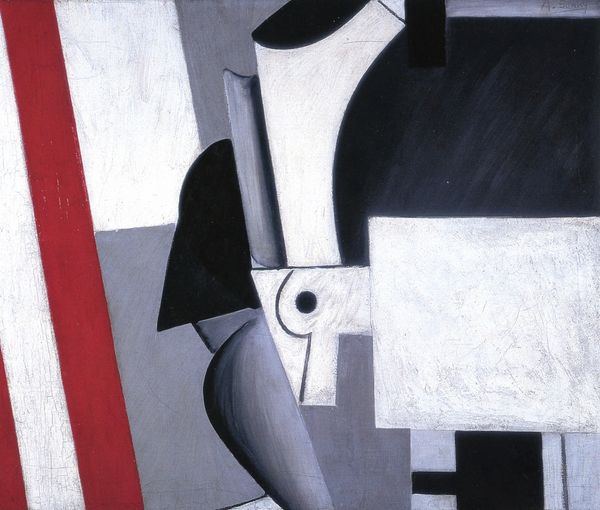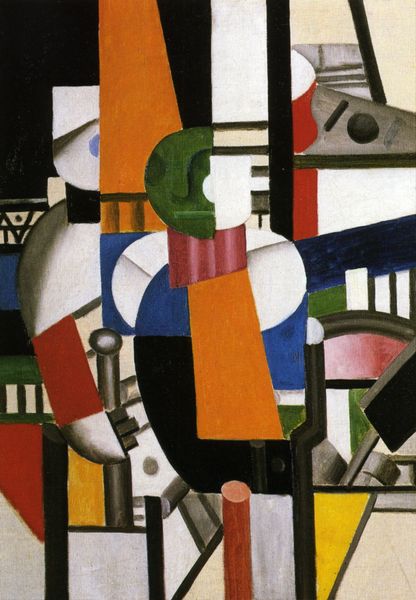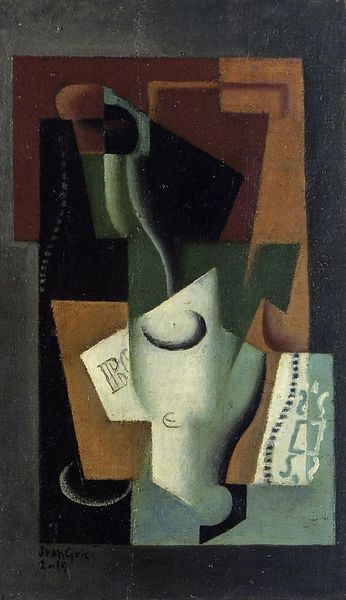
Dimensions: 90 x 66 cm
Copyright: Public domain US
Curator: Welcome to the Palazzo Brera. Before us hangs Carlo Carrà's "The Metaphysical Muse," an oil on canvas painted in 1917. Editor: Immediately, I’m struck by the dreamlike stillness, the air of suspended narrative. Everything appears solid yet unsettling. What’s the source of this strange atmosphere? Curator: Carrà, along with de Chirico, developed the Metaphysical style to evoke a sense of mystery by combining realistic elements in unexpected ways. It’s very rooted in its moment. The First World War deeply affected Carrà, and his art from this period shows a yearning for order, which many interpret as the basis for his artistic quest. Editor: That explains a lot. I'm intrigued by the objects: the mannequin holds a tennis racket and ball, near a multicolored pyramid and a picture including what looks like an aerial view. It all feels deliberately staged. Do these recurring motifs have any particular significance, drawing on common symbolic vocabularies? Curator: Precisely. The mannequin, for example, appears frequently in Metaphysical painting. It's seen as representing the alienated individual, stripped of identity. While that looks like an aerial view or military map along with a target it invokes the world at war. And consider the setting: a sparse, vaguely classical interior which is perhaps suggestive of lost order and ideals. The careful construction and display suggests an underlying critique of representation and a questioning of the relationship between art and reality during this fraught period in Italian history. Editor: The very conscious application of the medium to construct such scenes—painting on canvas—emphasizes the artifice, the 'making' of a reality, or an anti-reality as some might call it. Curator: Absolutely. And although it shares stylistic similarities with mannerism, I think Carrà went a step further with the geometrical aspects of it. Notice how, by this era, this piece challenges traditional ideas, pushing viewers to reconsider everything we hold certain. Editor: Looking at this painting with an awareness of its wartime context certainly enriches the work, turning what seemed at first merely peculiar into a powerful statement on dehumanization and cultural disruption. Curator: Indeed, viewing Carrà’s art allows us to contemplate the capacity of symbols to simultaneously evoke meaning and destabilize perceptions. Editor: Thinking through the materiality of the elements that are involved, it strikes me as something remarkably made.
Comments
No comments
Be the first to comment and join the conversation on the ultimate creative platform.
